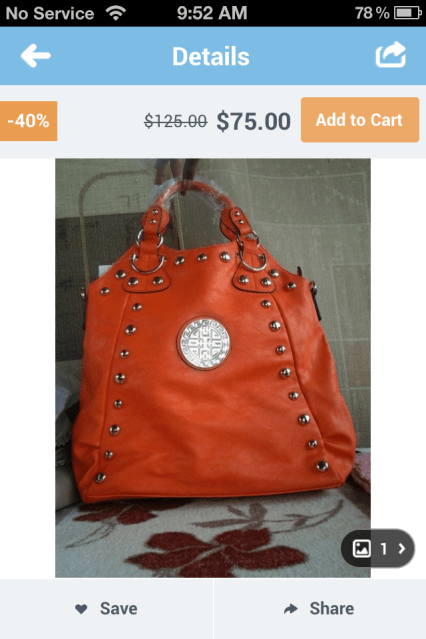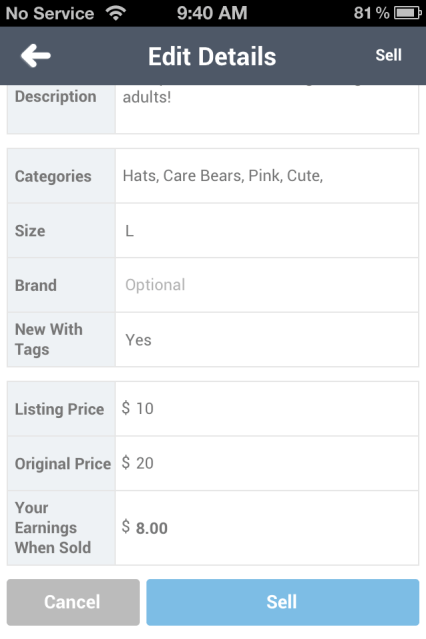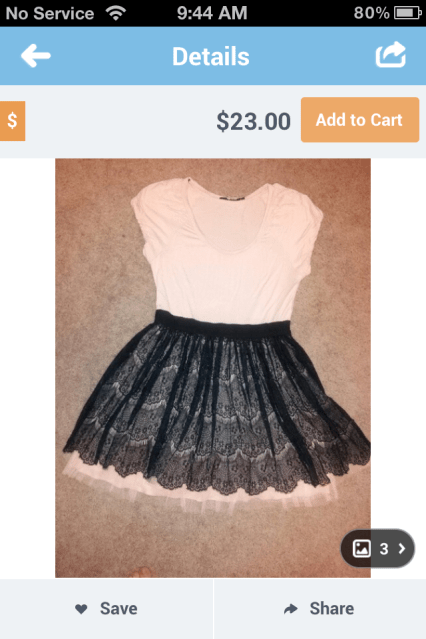Will algorithms or crowdsourced recommendations lead the way when it comes to the mobile shopping done via aggregators like Fancy, Wanelo, Polyvore or Fresh? A startup called Wish is betting on the former, likening itself to “an AdWords for shopping.” Today, the company is expanding its automated matching technology, which pairs people to product, into a new area: a mobile marketplace called “Wish Closet.” This feature will now allow the company’s nearly 15 million users to buy and sell items found in each other’s closets.
Launched by former Google, Yahoo and Facebook employees, Wish’s technical co-founding team believes that the best way to connect consumers to items they would want to purchase is through an algorithm combined, of course, with an engaging mobile experience.
“At Google, we worked on matching billions of different queries with web pages,” explains CEO Peter Szulczewski, who spent seven years at Google where he worked on AdWords, AdSense and Search. “And we think the best way to match millions of consumers to the best products is actually through technology.”
 Unlike other services like Wanelo or Polyvore where “trending” and popular products are ranked to help drive e-commerce sales, Wish is more focused on finding just what an individual user likes.
Unlike other services like Wanelo or Polyvore where “trending” and popular products are ranked to help drive e-commerce sales, Wish is more focused on finding just what an individual user likes.
The company originally began as a wish list website, allowing users to add items they like to various lists – not much different from creating Pinterest boards, for instance, but instead focused only on shopping. As new items are added, Wish gets smarter about a user’s preferences. It then helps merchants target those shoppers who are interested in items similar to what they have to sell.
For example, says Szulczewski, if a merchant has 100 blue, lace dresses to sell, Wish can point them to users who also have blue, lace dresses saved on their wish list. The merchants can reach those consumers with promotions when they’re browsing their feed, or even with push notifications.
Currently, Wish works with around 500 Amazon and eBay merchants who reach the company’s some half a million daily active users.
Introducing Wish Closet
Now, the company is bringing its product-matching technology to the users themselves with the debut of Wish Closet. Similar to Poshmark or Threadflip, Wish Closet lets users sell pre-owned items to other app users.

But unlike competitors which rely more heavily on user-initiated searches, “sale” parties, and other means of active discovery, Wish will attempt to connect buyers and sellers also through its algorithm.
After the sale is made, Wish will verify the buyer’s details, handling the payment processing, and providing the shipping labels that can be printed out and placed on the box before being dropped off at the Post Office. The company will take a 20 percent commission on these sales, it says.
The expansion comes at a time when Wish is reporting recent growth, now with week-over-week engagement up 15 percent, and users adding 5 to 10 million products to their wish lists every day, as well as sharing 200,000 products and lists with family and friends. The consumers spend around 30 minutes per day browsing the app and saving 19 items on average to their lists.
While these metrics are promising, the company doesn’t disclose how many transactions it has processed (“hundreds of thousands” is the ballpark figure) or what the dollar amount of those transactions are. It also can’t say how much better its technology works than those competitors relying on the popularity sort alone.
 “Typically when a new merchant comes on, we ask them to select three to five items, they will sell hundreds of items in the first 48 hours,” Szulczewski says. However, he admits that the company does try to help the merchants get a lot of transactions in the first few days, since the company is still trying to prove to the retailers that Wish is a meaningful distribution channel for them.
“Typically when a new merchant comes on, we ask them to select three to five items, they will sell hundreds of items in the first 48 hours,” Szulczewski says. However, he admits that the company does try to help the merchants get a lot of transactions in the first few days, since the company is still trying to prove to the retailers that Wish is a meaningful distribution channel for them.
However, if the company now plans to apply that same focus to getting users’ closet items to sell, too, then it could establish itself as a worthy competitor to others like Poshmark or Threadflip, especially since it will now marry the secondhand marketplace concept with buying new all under one roof. It also aims for a slightly different demographic (women 15-25), while Wanelo skews a little younger and Poshmark a little older, or so Szulczewski believes.
The new Wish Closet feature, which had been tested already with some 10,000 sellers, is now available in the company’s mobile applications here on iOS or here on Android.
